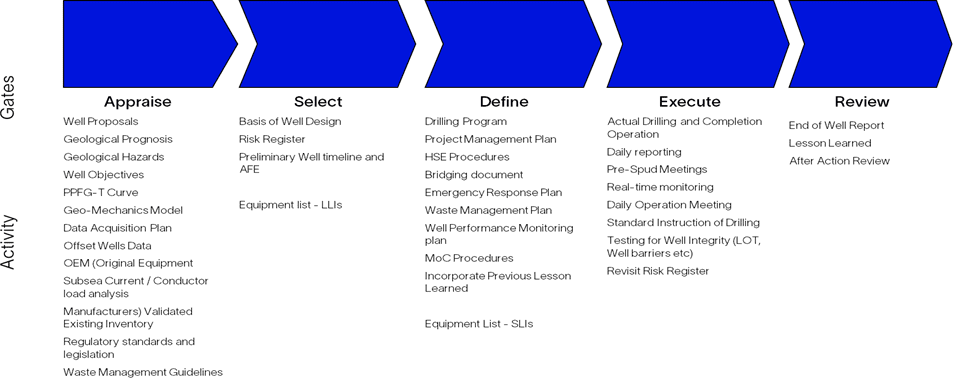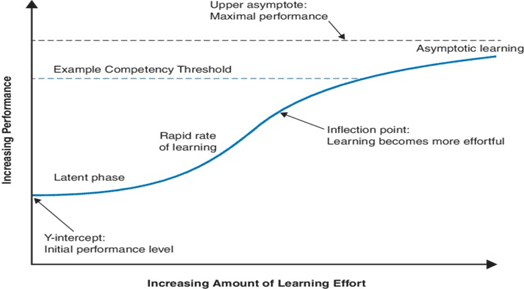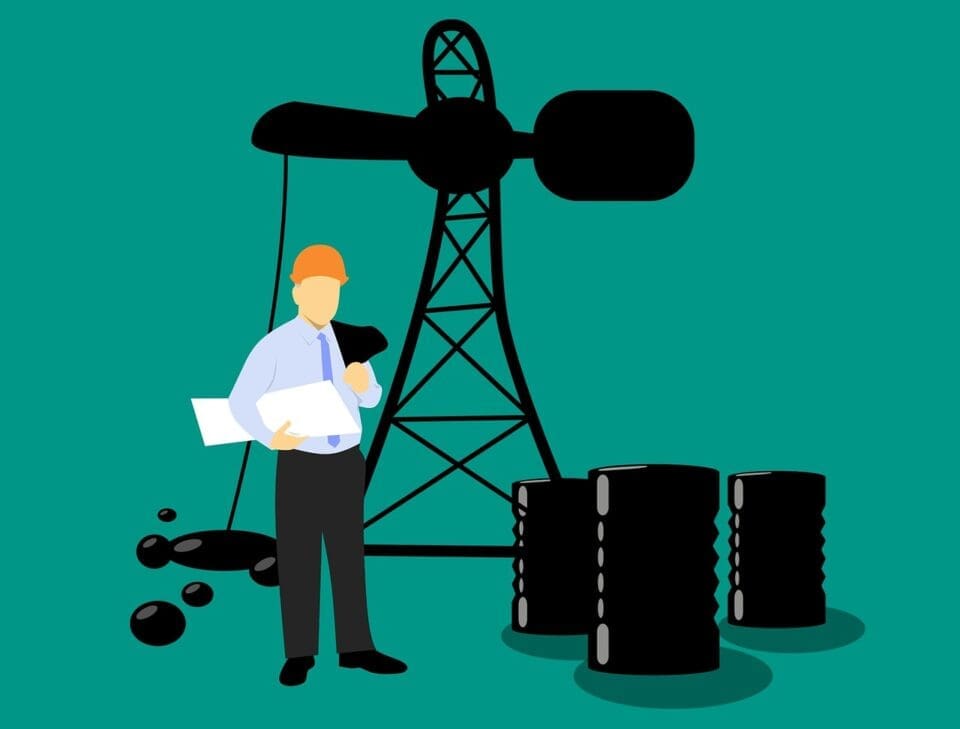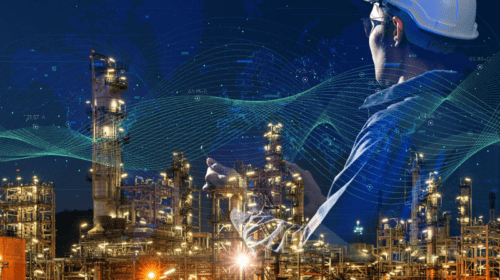The drilling & completion (D&C) operation is among the most intricate and critical operations of the oil and gas industry, involving diverse disciplines, technologies, and contributors. All these D&C activities require meticulous planning, implementation, and surveillance. The D&C team includes various participating groups like rig providers and operators, services providers, contractors, and regulators.
Collaborative efforts among stakeholders can lead to success in the (D&C) operations, leveraging their expertise and years of experience. However, the fragmented and inefficient approach often prevails, causing the loss of integration and collaboration spirit. It results in failures, delays, and cost overruns. Due to the fluctuating oil prices and highly volatile market conditions since the 2015 downturn, oil and gas companies prioritize improving efficiency and maximizing stakeholder return on investment (ROI) over investing in new projects.
The D&C cost for any project is estimated to account for 50 percent of capital in an operator’s exploration and production (E&P) budget. Hence, operators always seek ways to reduce the D&C cost to improve the project’s economics. While utilizing the best technology for D&C project, the best technology is expensive and increases capital expenditures. Therefore, prioritizing the utilization of appropriate fit-for-basin technologies becomes crucial to achieve the commercial success of any D&C.
Now the question arises – what is fit-for-basin technology? How to identify this fit-for-basin technology? Further, how to optimize the new technology implementation?
The answer to these questions lies in utilizing the learning curve. Here’s what every D&C project needs to take from the integrated knowledge management process to maximize efficiency with minimum capital expenditure. This article will explore the importance of knowledge management and its elements to determine how it drives efficiency, performance, safety, and reduced emissions.
Integrated Project Management Methodology
 Figure-01 illustrates the Project Management methodology to execute the D&C Project. This methodology is inspired by Project Management Process groups developed and published by the PMI (Project Management Institute).
Figure-01 illustrates the Project Management methodology to execute the D&C Project. This methodology is inspired by Project Management Process groups developed and published by the PMI (Project Management Institute).
Components of Integrated Knowledge Management
The integrated lesson learned, or knowledge management, is a crucial process comprising 8 interlinked steps. Here’s a breakdown of each step:
- Promoting Collaboration and Communications
Collaboration and communication among the project team members play a vital role. Here, the project manager is responsible for providing the right collaboration platform, enabling the team to share information, insights, and experiences in real time. It enhances their decision-making and problem-solving abilities. By removing the silos and fostering a culture of collaboration, the oil and gas operators can tap into their team’s collective intelligence and drive continuous improvement. Regular team meetings, preferably face-to-face, help foster a collaborative team environment.
- Effective Data Management
D&C operation generates a massive database ranging from subsurface data to drilling data. In the current age of the data-driven world, capturing and managing data is essential. For this, multiple solutions, such as MDTotco, Rigsense, DrillOps, etc., are available in the D&C industry. The next step is to analyze the data and generate insights.
- Creating and modifying Standard Operating Procedures
Standard operating procedures (SOPs) involving safety protocols, best practices, and step-by-step guidelines are the building blocks of the D&C Program. SOPs provide a standardized framework for various D&C-related activities, equipment, and tools. These resources ensure consistency and efficiency in operations and adherence to industry regulations. However, regular modification is required based on the previous lesson learned as captured in After Action Reviews (AAR).
- Capturing Lessons Learned
One of the most vital steps of the knowledge management process is to capture the lesson learned, executed at the end of each section. Otherwise, the chances of losing the lesson learned are high due to the D&C operation pace. The project manager should foster the habit of capturing lessons learned by each team member and ensure conducting After Action Review (AAR) after each session to identify the most impactful action items.
Some lessons may demand immediate action, while others are far-sighted. Furthermore, some of them may require introducing new equipment, adding cost to the project to ensure the well’s safety & integrity.
- Adopting the Technology
In the digital transformation era, knowledge management in D&C operations must embrace technological advancements. Data analytics, artificial intelligence, machine learning, and automation tools have immense potential in extracting insights from D&C data, predicting operational outcomes, and optimizing D&C processes. These technologies can help organizations enhance efficiency, decrease costs, mitigate risks, and innovate in their D&C operations. Predictive analytics can help identify potential drilling risks or equipment failures in advance, alerting teams to take proactive maintenance steps and improve safety. Multiple tools available in the market employ ML and AI to predict risks such as stuck pipes, mud losses, rig equipment failures, etc.
- Building a knowledge database
Creating a centralized knowledge database is a treasure trove of technical documents, research papers, case studies, drilling reports, risk assessments, and lessons learned. Personnel involved in D&C operations can utilize these repositories to gain insights, learn from previous experiences, and access critical knowledge when needed. It enhances decision-making, problem-solving, and innovation. Every major oil and gas company has heavily invested in building knowledge databases.
- Continuous Improvement
Knowledge management is an ongoing continuous improvement process and not a one-time effort. Organizations can identify areas for improvement and implement corrective actions with the help of data captured and lessons learned. It allows organizations to learn from project successes and failures. It also helps them adapt to changing market conditions and prioritize technological advancements.
Learning Curve
A sigmoid curve signifies the most prominent relationship between learning efforts and performance in the learning curve theory.
 The learning curve has 4 phases – latent phase, rapid learning rate, inflection point, and asymptotic learning.
The learning curve has 4 phases – latent phase, rapid learning rate, inflection point, and asymptotic learning.
The latent learning phase happens during the initial stages of a project when the team is either starting anew or is inexperienced. It coincides with the team’s forming and storming phase with multiple activities that might not appear coherent immediately. A collaborative team will outperform this latent phase than a non-collaborative one, advancing to the norming phase early. Here the project manager’s role becomes crucial to help teams collaborate by conducting team-building activities and regular meetings.
The rapid learning starts after teams transition to the norming phase, propelling them swiftly into the performing stage. In this phase, the overall performance shows daily increments, especially in repeated tasks. It helps teams become efficient in routine jobs such as making drill pipe and casing connections, BOP N/U and N/D, Bottom Hole Assembly (BHA) makeup and lay down, etc. They also develop local field-related procedures by capturing regular lessons learned and conducting AARs. However, this rapid learning phase does not last very long, and the team eventually reaches a point, where pushing for further performance improvement becomes difficult. Hence, further performance improvement requires a change in technology or methodology.
But bringing change in technology or methodology requires teams to go through a similar learning curve again. For an informed decision, the project manager must perform a cost-benefit analysis deciding whether to introduce a new technological framework to increase the maximal performance or shift the inflection point.
Conclusion
The integrated knowledge management process can significantly improve the performance of the D&C Project by optimizing the learning curve and reducing the demand for capital expenditure. Since drilling efficiency is inversely proportional to the drilling emission, it can lead organizations closer to sustainability. At the core of this process lies the human factor. People excel at learning from previous actions and mistakes. To help the project, the project manager should provide the proper tools and techniques and implement the knowledge management framework with assigned responsibilities.
Mohit Kumar began his remarkable journey in a small village near Agra, India, and today is an oil and gas industry leader in Anchorage, Alaska.
Growing up in a farming family, he overcame numerous obstacles and emerged as one of the top performers in the prestigious IIT-JEE examination, securing the 3303rd All India Rank out of over 700,000 students. This achievement paved the way for him to study petroleum engineering at the Indian Institute of Technology (ISM), Dhanbad, from where he graduated with honors in 2008.
Today, Kumar serves as an account manager for one of the world’s largest oilfield service companies, residing in Alaska. Progressing from project manager to account manager within a year of joining the company, his expertise lies in building and executing value-based commercial models to deliver cutting-edge technological solutions in the oil and gas industry, contributing to the growth and success of his organization in Alaska.
Oil and gas operations are commonly found in remote locations far from company headquarters. Now, it's possible to monitor pump operations, collate and analyze seismic data, and track employees around the world from almost anywhere. Whether employees are in the office or in the field, the internet and related applications enable a greater multidirectional flow of information – and control – than ever before.






